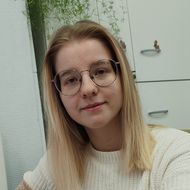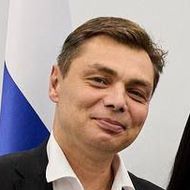AI on Guard of Ecology: Students from Russia and Belarus Propose New Solutions to Environmental Problems

An international online hackathon dedicated to solving environmental problems was held at HSE University in Nizhny Novgorod. Students employed artificial intelligence and computer vision to develop innovative solutions for image segmentation, predictive modelling (forecasting future events based on data from the past) of emissions and creating chatbots for nature reserves and national parks.
The international online hackathon ‘Solving Environmental Problems with Artificial Intelligence’ was organised by HSE University in Nizhny Novgorod together with N.I. Lobachevsky State University of Nizhny Novgorod within the framework of the project ‘From Education to Profession.’
The hackathon was supported by the Legislative Assembly of the Nizhny Novgorod Region, the Ministry of Information Technologies and Communications of the Nizhny Novgorod Region, the Ministry of Education and Science of the Nizhny Novgorod Region, the Ministry of Youth Policy of the Nizhny Novgorod Region, the Autonomous Nonprofit Organization ‘Gorky Tech,’ the IT-campus ‘Neimark,’ the V.N. Sukachev Forest Institute of the Federal Research Centre ‘Krasnoyarsk Science Centre of the Siberian Branch of the Russian Academy of Sciences,’ and the Federal State Budgetary Institution ‘Kerzhensky State Reserve.’
About 100 students from 12 teams representing Russia (Nizhny Novgorod and region, Yakutsk, Astrakhan, Vladivostok, Vyatka, Chita, Kuzbass, Cheboksary, Tyumen, and Innopolis) and Belarus took part in the competition.
The winners of the hackathon were the following teams:
- HSE University in Nizhny Novgorod;
- Astrakhan State University named after V. N. Tatishchev;
- Northern (Arctic) Federal University named after M.V. Lomonosov.
The solutions proposed by students throughout the hackathon were aimed at increasing the efficiency of drones and artificial intelligence technologies in solving a number of environmental problems, which were presented in the format of three different cases.
The case on predictive modelling of industrial harmful substance emissions dispersion in the urban environment was presented to hackathon participants by Alexey Kychkin, a researcher at the Laboratory for Interdisciplinary Empirical Studies at HSE University in Perm.
Vasily Yakimov, Dean of the Faculty of Ecology and Land Use, N.I. Lobachevsky State University of Nizhny Novgorod, presented the case ‘Segmentation of an image obtained by aerial photography into fragments corresponding to tree crowns.’
In the case from the Kerzhensky Nature Reserve ‘Preserve the rights of nature while considering the needs of people,’ students had to create a network of chatbots about nature cognitive tourism, protected areas, and national parks for different age groups and messengers.
The main problem of the case is the lack of a single up-to-date database of all reserves, with flexibility that could be updated in real time and integrated with different platforms, and support a variety of data formats—text information, images, videos, maps, and others.

Mikhail Koshelev, fourth-year student of the ‘Applied Mathematics and Information Science’ pro-gramme at HSE University in Nizhny Novgorod
Modern chatbots can be implemented in two main ways: 1) using a large language model (LLM) to generate answers directly based on the user's prompt (query); 2) identifying key questions, crafting pre-written answers, and classifying user prompts to provide responses from the knowledge base. We chose the second approach because it avoids AI hallucinations and requires significantly less computational power.
We built a dataset and tested different machine learning and deep learning techniques. We also came up with tools to reduce uncertainty and distilled the model into its smaller analogue to speed up its work.
Overall, it was an interesting experience. During the defence, we confidently answered the jury's technical questions and won first place.
The second-place team of the hackathon also worked on the case of the Kerzhensky Nature Reserve.

Irina Veselkova, Master's student of Astrakhan State University named after V.N. Tatishchev
Participation in the hackathon helped us understand the importance of practical experience. We discovered that a seemingly simple chatbot can have many pitfalls, and programming it requires a separate skillset.
Properly organised teamwork was crucial to our success. Some members were responsible for the user interface, while others worked on the server. Our team captain coordinated the entire process and ensured that everything came together.
During the defence, it was interesting to hear expert opinions and solutions from other participants and to learn about different approaches to solving similar problems.
In the future, we plan to improve the chatbot by expanding the database of reserves and improving the interface. This will include features that enable users to upload photos and organise events.
Tatyana Gorodnicheva, Deputy Director of the Federal State Budgetary Institution ‘Kerzhensky State Reserve,’ noted that quite a few projects were presented on the case they had proposed, and they are ready to put nearly all the solutions into effect at the reserve and national park.
Valery Cherepennikov, Director of ANO ‘NEIMARK’ and President of the Jury, noted that the main technologies used in solving environmental issues during the hackathon were artificial intelligence and computer vision.

Valery Cherepennikov
A quarter of a century ago, the IT specialists in Nizhny Novgorod taught computers and smartphones how to ‘see’ by creating the OpenCV library. Today, this library is used by some of the global technology giants, leading museums, universities, and central banks around the world. This technology has its roots in the work of Yuri Neimark, whose name is given to our IT campus.
We are also continuing to develop areas such as computer vision and artificial intelligence to use them in new generations of Russian drones. We are glad that these technologies are central to this hackathon and that participants have demonstrated their understanding and interest in them. With such a young generation, we have no reason to worry about Russia's high-tech future!

